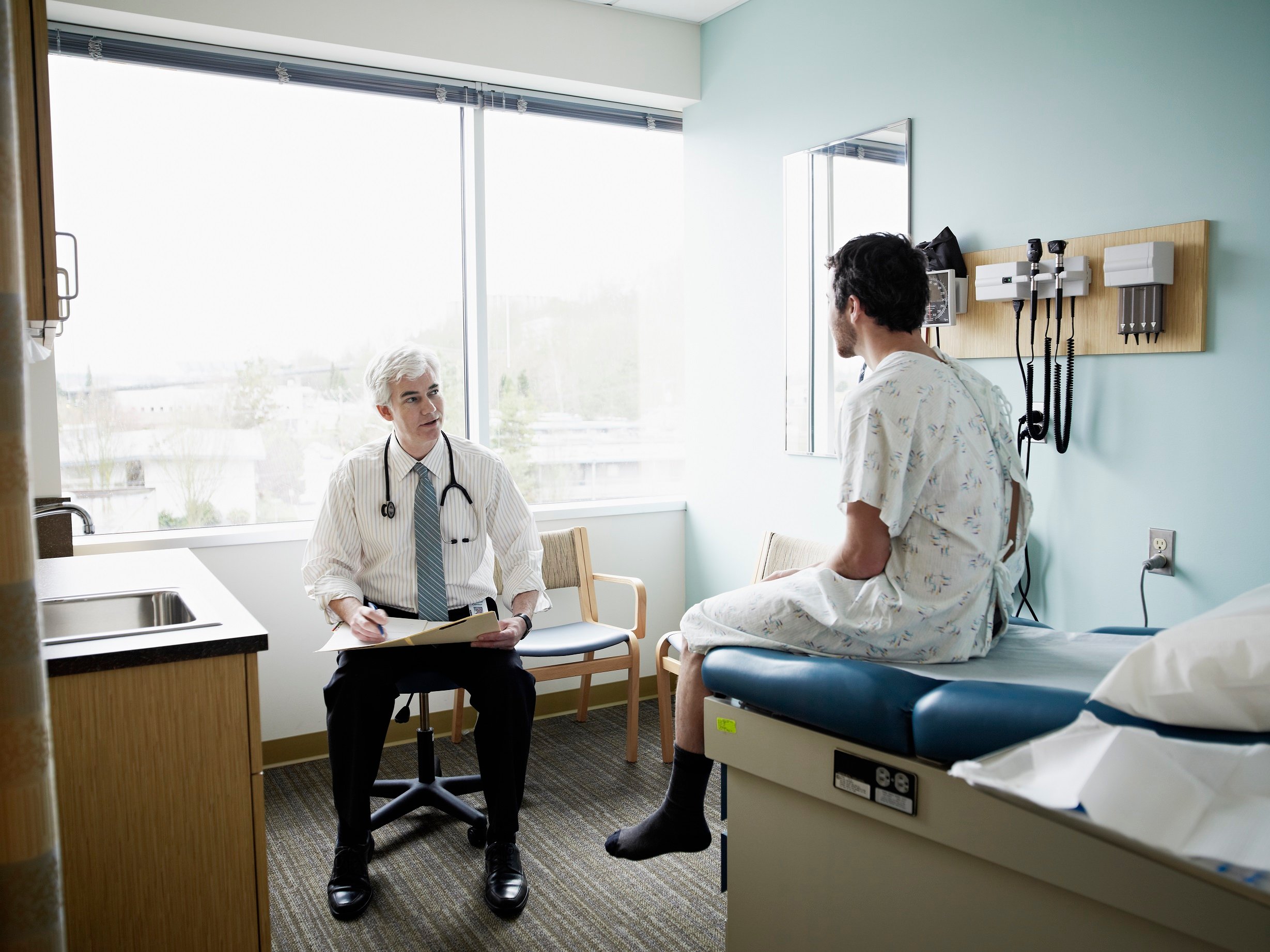Testicular Cancer: A Young Man’s Disease
5 min read

Author: Gregory Britt, MD
Imagine seeing three men enjoying a day at the park. Steven is 22 years old, and he’s ready for a run around the lake. Steven’s 48-year-old father Dave stays behind to talk with Steven’s 84-year-old grandfather, Vince. Which of these three men is most likely to be diagnosed with testicular cancer? Steven, Dave, or Vince?
If you guessed it was Steven, you’re correct. While we might think of cancer as a disease that mostly affects us in our middle age and senior years, testicular cancer is different. According to the National Cancer Institute, it’s most common in men ages 20 to 34.
Fortunately, testicular cancer is relatively rare. Around 1 in 250 men will be diagnosed with testicular cancer at some point in their lives. It’s also survivable, with a man’s risk of dying from testicular cancer at around 1 in 5,000. Early detection, however, remains a key element of successful treatment.
“Many types of testicular cancer can spread quickly and widely throughout the body,” said Dr. Gregory Britt, medical oncologist and hematologist with Rocky Mountain Cancer Centers (RMCC). “It’s essential to tell your doctor right away if you experience any symptoms – especially lumps.”
Where Most Testicular Cancers Begin
Testicular cancer begins in the testicles, the part of the male reproductive system that produces and stores sperm. The two organs hang below the penis in a skin sac called the scrotum. When cells begin to multiply out of control in one or both testicles, testicular cancer develops. Around 90% of testicular cancers begin in the germ cells, the parts of the testicles that make sperm. There are two types of germ-cell cancers: seminomas and non-seminomas.
Semonoma: A Slow-Growing Cancer
Seminomas, which begin in the germ cells, grow slowly and are less likely to metastasize than other kinds of cancer. When tumors metastasize, they spread to other parts of your body. They become more challenging to treat than tumors still contained in one area of your body.
Classic seminomas make up around 95% of seminomas and affect men ages 25 to 45. A second subtype of this tumor, the spermatocytic seminoma, is more common in men 65 years old and older. This type is less likely to grow than a classic seminoma.
Nonseminoma Tumors Spread More Quickly
Like seminomas, nonseminoma tumors also begin in the germ cells, but they grow and spread more quickly than seminomas.
Nonseminomas are divided into four main subtypes:
- Choriocarcinoma – A very rare and fast-growing type of testicular cancer.
- Embryonal carcinoma – Another rare, fast-growing cancer.
- Teratoma – A tumor made up of bone, hair, or teeth tissue that can show up either in the testicles or elsewhere in the body. Mature teratomas rarely spread and can be surgically removed. Immature teratomas are more likely to spread. A third type, called a somatic-type malignancy, is the rarest teratoma.
- Yolk sac carcinoma – A common testicular cancer in children, especially in infants. When found in adults, it can be more difficult to treat than in children.
Benign Testicular Tumors
There are also two types of benign testicular tumors, which doctors will either remove or monitor. The first are stromal tumors that begin in the tissue that supports the testicles. They make up only 5% of adult testicular tumors, but they are four times more common in children.
The second type, known as intratubular germ cell neoplasms, develops in the tubes where sperm cells form. They don’t usually spread unless they become cancerous. Also known as carcinomas in situ, doctors usually find this type of tumor during fertility testing. Some doctors opt to simply observe carcinomas in situ and do nothing unless it continues to grow.
What Are the Risk Factors for Testicular Cancer?
 There are some conditions that can make you more likely to develop testicular cancer. There is not a specific gene linked to testicular cancer, although it does seem to pass from generation to generation. In addition, the average age at diagnosis is two to three years younger than the general population if a first-degree relative has testicular cancer.
There are some conditions that can make you more likely to develop testicular cancer. There is not a specific gene linked to testicular cancer, although it does seem to pass from generation to generation. In addition, the average age at diagnosis is two to three years younger than the general population if a first-degree relative has testicular cancer.
Other risk factors include having an undescended testicle as a child and a non-cancerous lesion known as a germ cell neoplasia in situ (GCNIS), formerly known as carcinoma in situ.
What Are the Symptoms of Testicular Cancer?
Men who notice symptoms of testicular cancer wait an average of five months before checking in with their doctors. According to the Urology Care Foundation, a tumor can spread to other parts of your body during that time, making it more difficult to treat, ultimately reducing your chance of survival.
Tell your doctor immediately if you feel any of these four signs of testicular cancer:
- A feeling of heaviness in the scrotum
- A dull ache or pain in your groin, testicle, or scrotum
- A painless lump or swelling in the testicle
- Sudden swelling in the scrotum
How Long Can You Live with Testicular Cancer Without Treatment?
If left undetected, testicular cancer can spread to other parts of the body, such as the brain, lungs, and liver. When any type of cancer spreads throughout the body, including testicular cancer, it can cause complications that can become fatal in a matter of months, even with treatment.
What Are the Most Effective Treatments for Testicular Cancer?
Thankfully, effective treatments for most types of testicular cancer exist, especially when paired with early diagnosis. Doctors first determine what type of cancer it is, what stage it’s in, and whether it has spread. They order diagnostic scans, such as X-rays, CT scans, and MRIs. They might also use biopsies and blood tests.
Depending on their findings, doctors will recommend one or more of five different types of treatment:
- Chemotherapy – This involves using drugs that kill cancer cells or stop them from dividing. The drugs can be administered through mouth or by injection into veins or muscles .
- High-dose chemotherapy with stem cell transplant – Because high-dose chemotherapy damages healthy cells, stem cell transplants are used to replace blood-forming cells.
- Radiation therapy – This involves targeting cancer cells with X-rays or other radiation.
- Surgery – This involves the removal of the affected testicle and often some of the lymph nodes.
- Surveillance – In certain types of testicular cancer and carcinoma in situ of the testicle, doctors recommend holding off on treatment until it becomes necessary.
RMCC Offers Comprehensive Testicular Cancer Treatments
Testicular cancer can vary widely in severity and type, but at RMCC, we’re equipped to handle all types of testicular cancer. If you’ve been diagnosed with testicular cancer, we’re here to provide the most advanced, highly effective treatments possible.